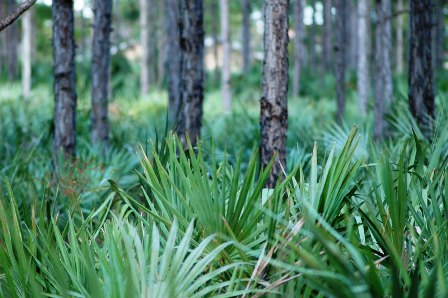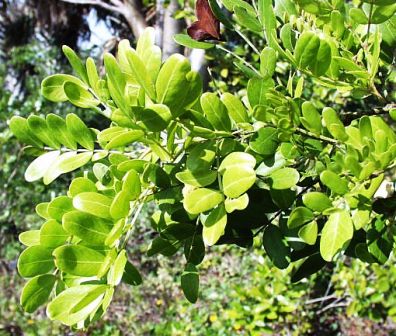Discover Florida Nature
It's time to explore the natural Florida


|
|
|
|
|
 South
Florida Rockland part of the Upland Ecosystem. Prior to the advent of
air conditioning, Florida was an unbearable place for people to live.
The things that sustained Florida before tourism were turpentine
harvesting, logging and other industries that depended on these upland
ecosystems. This habitat is found only in the extreme southern regions
of Florida and includes the coastal regions south and west of Miami as
well as the Florida keys. South
Florida Rockland part of the Upland Ecosystem. Prior to the advent of
air conditioning, Florida was an unbearable place for people to live.
The things that sustained Florida before tourism were turpentine
harvesting, logging and other industries that depended on these upland
ecosystems. This habitat is found only in the extreme southern regions
of Florida and includes the coastal regions south and west of Miami as
well as the Florida keys. This habitat is found only in the extreme southern regions of Florida and includes the coastal regions south and west of Miami as well as the Florida keys. The landform consists of mainly limestone outcroppings. SUBSTRATE: Shallow soils over outcroppings of limestone; subtropical to tropical hardwood hammock soils are largely organic. TOPOGRAPHY: Uplands. VEGETATION: Hammocks—forests of broad-leaved, evergreen trees typical of Bahamas and Greater Antilles; many tropical epiphytes; more than 150 species of trees and shrubs native to hammocks of Dade, Monroe, and Collier counties. Pine forests—dominated by south Florida variety of slash pine; diverse understory of mostly tropical shrubs, as well as many endemic herbs. FAUNA: Vertebrates, except for birds, of temperate origin and derived largely from southeastern U.S. fauna; West Indian land birds, such as mangrove cuckoos, butterflies, and land snails are widespread in tropical hammocks of Florida Keys; endangered Schaus butterfly and smallest white-tailed deer in U.S PROCESSES / DYNAMICS / ABIOTIC FACTORS: Pine forests occur in areas with permanent, fresh groundwater; fire required for maintenance of pine forests; some hammock trees such as gumbo limbo and mahogany also appear to require openings from fire or other disturbances in order to regenerate. NEGATIVE IMPACTS:& Habitats rapidly shrinking from urban development; many earlier hammocks and pinelands cleared by logging or for agriculture; exotic plants such as Brazilian pepper are major threat; exotic tropical vertebrates increasing rapidly and spreading geographically.  Many
tropical plants epiphytes such as orchids, bromeliads, and ferns. The
hammocks consist of evergreen forests with species that are also found
in the Bahamas and the Greater Antilles. Sadly, development in Miami
and the keys has destroyed much of this unique habitat. Several of the
insects and arthropods found in this ecosystem are rare or endangered
due to loss of habitat. Many
tropical plants epiphytes such as orchids, bromeliads, and ferns. The
hammocks consist of evergreen forests with species that are also found
in the Bahamas and the Greater Antilles. Sadly, development in Miami
and the keys has destroyed much of this unique habitat. Several of the
insects and arthropods found in this ecosystem are rare or endangered
due to loss of habitat.The South Florida ocklands are a subtropical moist broadleaf forest eco-region occurring in southern Florida and the Florida Keys in the United States, where they would naturally cover an area of 800 square miles. These forests form on limestone outcroppings with very thin soil, the higher elevation separating them from other habitats.. On mainland Florida, rocklands exist primarily on the Miami Rock Ridge, which extends from the Miami River south to Everglades National Park. South Florida rocklands are further divided into pine rocklands and rockland hammocks. The pine rockland community canopy is dominated almost exclusively by South Florida Slash Pine. Beneath this canopy lies a rich understory composed of grasses, sedges, palms, vines, and shrubs of temperate and tropical origin. The pine rockland community is South Florida’s most floristically diverse plant community and includes several endemic species. A sub-climatic community, pine rocklands have depended on wildfire to keep them from transitioning into hardwood hammocks. Rockland hammocks form on regions of rockland where a lack of fire has allowed hardwood trees to become dominant, nearly all of which are tropical in origin. Natural firebreaks include exposed limestone cliffs and solution sinkholes. Southern Live Oak, a temperate species, can be found on hammock margins |
|
|
Advertise | Privacy Statement | Dog Encyclopedia | Video |Contact | Alaska Nature |
|